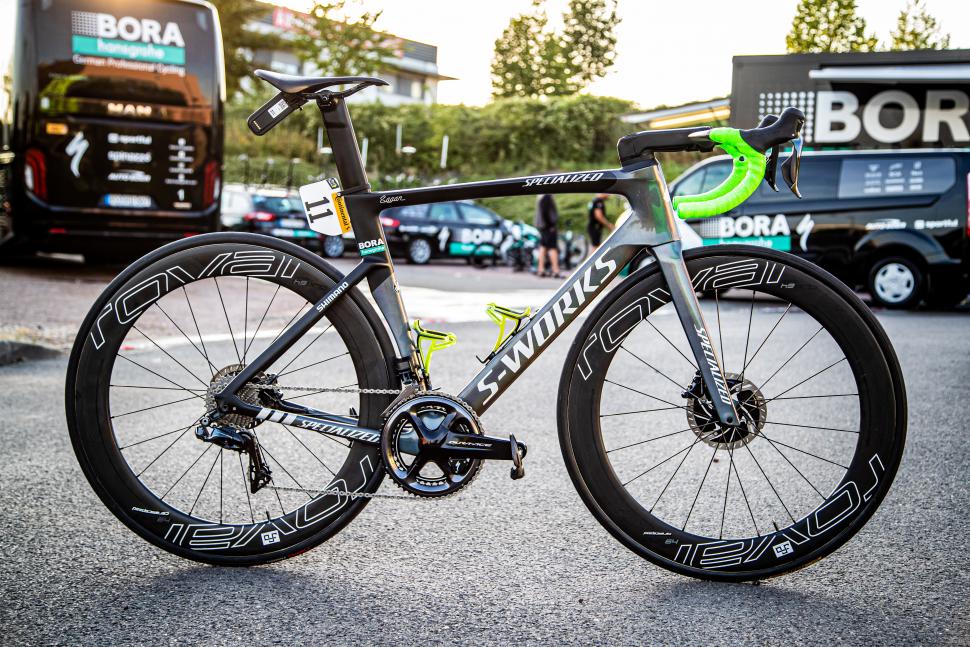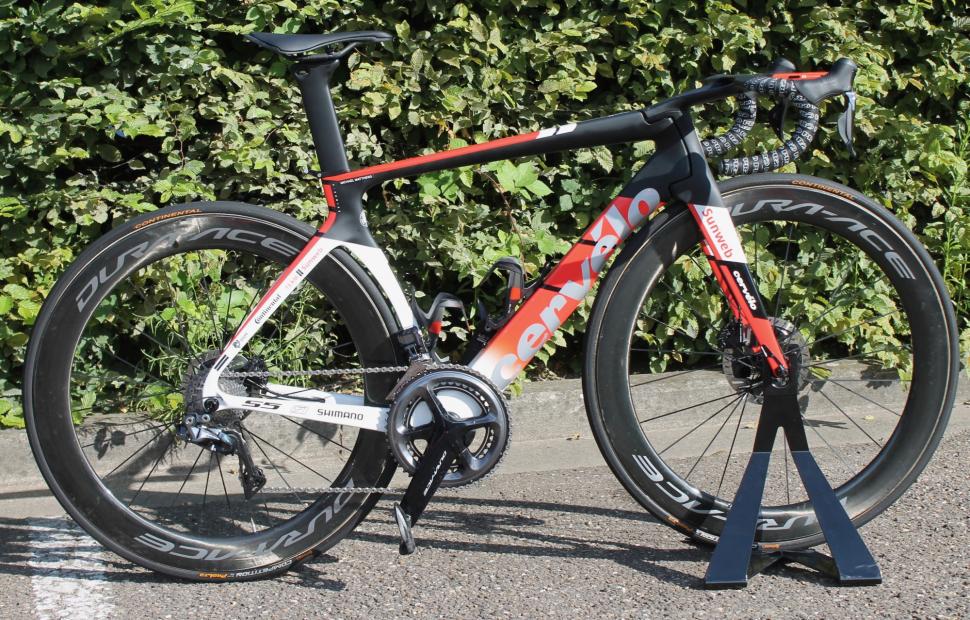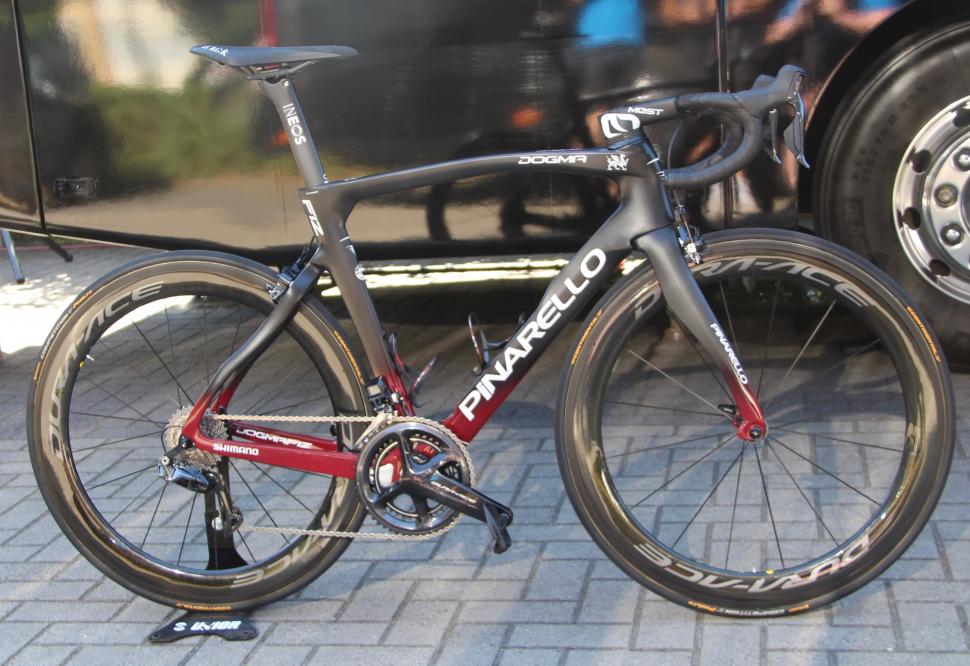- News
- Reviews
- Bikes
- Components
- Bar tape & grips
- Bottom brackets
- Brake & gear cables
- Brake & STI levers
- Brake pads & spares
- Brakes
- Cassettes & freewheels
- Chains
- Chainsets & chainrings
- Derailleurs - front
- Derailleurs - rear
- Forks
- Gear levers & shifters
- Groupsets
- Handlebars & extensions
- Headsets
- Hubs
- Inner tubes
- Pedals
- Quick releases & skewers
- Saddles
- Seatposts
- Stems
- Wheels
- Tyres
- Tubeless valves
- Accessories
- Accessories - misc
- Computer mounts
- Bags
- Bar ends
- Bike bags & cases
- Bottle cages
- Bottles
- Cameras
- Car racks
- Child seats
- Computers
- Glasses
- GPS units
- Helmets
- Lights - front
- Lights - rear
- Lights - sets
- Locks
- Mirrors
- Mudguards
- Racks
- Pumps & CO2 inflators
- Puncture kits
- Reflectives
- Smart watches
- Stands and racks
- Trailers
- Clothing
- Health, fitness and nutrition
- Tools and workshop
- Miscellaneous
- Buyers Guides
- Features
- Forum
- Recommends
- Podcast
TECH NEWS
 wilier zero slr rear disc
wilier zero slr rear discThe rise of disc brakes at the Tour de France + top tip from a pro mechanic for setting up disc brakes
Love or hate them, disc brakes are here to stay and at this year’s Tour de France they were a much bigger presence than in any previous year.
Disc brakes have been in and out of the pro peloton for the past few years though, with the UCI proving indecisive and running a 'trial' for a number of years. For 2019 it finally made up its mind and rubber stamped disc brakes and as a result, we've seen a much bigger interest from teams in using disc brakes than any previous season.
Disc brakes are still far from dominating the peloton, but there are an awful lot of disc-equipped bikes. We roamed the team trucks ahead of the Grand Depart in Brussels last week to get a closer look.
- UCI approves disc brakes for 2019 season
Six teams have completely switched over to disc brakes for the Tour. Deceuninck - Quick-Step, Alpecin - Katusha, Dimension Data, Bora-Hansgrohe, Trek-Segafredo, Mitchelton-Scott and Wanty–Groupe Gobert have all fully committed to discs. In some cases, it's not just for this race but from the beginning of the season. Discs haven't appeared to do Deceuninck - Quick-Step any harm, this Belgian team has racked up 48 victories at the time of writing!
Other teams are flirting with disc brakes. EF Education First, CCC, Sunweb, Astana and Arkéa–Samsic are clearly letting riders choose their brakes. We spotted André Greipel riding a disc-equipped BH G7. Some of the Sunweb riders are using disc brakes. Sometimes it's dependent on the bike, the Cervelo S5 Disc aero bike (above) only being available with disc brakes so that removes the brake choice, while the R5 all-rounder comes with rim or disc brakes.
Then there are teams with no disc brakes to be seen at all, including Team Ineos, Movistar, UAE Team Emirates, Team Jumbo Visma, Groupama-FDJ and Cofidis. Team Ineos haven't shown any interest in disc brakes, though we did spot Dave Brailsford's Dogma F12 with disc brakes as he was joining the team on a pre-race training ride.
The choice of disc or rim brakes is clearly down to the team managers and their bike sponsors. and how much sway the bike sponsor has is up for debate. We can presume Specialized have encouraged Quick-Step and Bora to ride disc brakes, but Pinarello doesn't seem to mind which brakes Team Ineos use.
Some people may feel manufacturers are forcing riders to use disc brakes, which may or may not be true. In some cases that is evident as certain new bikes - like the Cannondale SystemSix or Wilier Zero SLR - are only available with disc brakes. Let’s not forget the Tour de France is a huge marketing opportunity and was originally conceived to sell newspapers so it's obviously conceivable that the brands want the riders to ride the latest equipment.
Are disc brakes really such a big deal that some people make out though, or are they just the latest in a long line of technological advances like derailleurs, quick release axles, carbon frames, carbon wheels, aerodynamics etc?
- 16 of 2019’s hottest disc brake-equipped race bikes
One observation from roving around the team trucks ahead of the Grand Depart in Brussels is that there was a lot of disc brake bleeding going on.
We chatted to a team mechanic from Dimension-Data, while he was bleeding disc brakes funnily enough, and he revealed that disc brakes do mean more work for the mechanics. He said that they only bleed the disc brakes when they need to, based either on feedback from the riders or based on their own inspection of the bike during the daily cleaning process. I expected him to say daily, weekly or another set interval, but as is needed was this mechanics view.
Asked if he had any good advice or tips for setting up disc brakes, he said time and patience were the key skills. He also showed us this Birzman Clam, a small metal sleeve that you fit between the brake pads and disc rotor to space the calliper centrally over the rotor. He said it really helped with setting up the brakes. We’ve never seen one before so we’ll definitely be getting one in for review.
- Tour de France 2019 Bikes and Tech Preview - What new stuff we can expect to see?
It must be a logistical nightmare for the teams that support rim and disc brakes though, as these two piles of rim and disc brake wheels at the EF Education First team truck show. We wanted to get over to see the Mavic neutral service cars and bikes to inspect their selection of spare wheels but sadly ran out of time before we had to leave.
What do you think of disc brakes in the Tour de France peloton? Here to stay or just a fad?
David worked on the road.cc tech team from 2012-2020. Previously he was editor of Bikemagic.com and before that staff writer at RCUK. He's a seasoned cyclist of all disciplines, from road to mountain biking, touring to cyclo-cross, he only wishes he had time to ride them all. He's mildly competitive, though he'll never admit it, and is a frequent road racer but is too lazy to do really well. He currently resides in the Cotswolds, and you can now find him over on his own YouTube channel David Arthur - Just Ride Bikes.
Latest Comments
- ktache 1 hour 17 min ago
Quest are showing the Paris Roubaix highlights at 11 both days.
- chrisonabike 2 hours 1 min ago
Pretty sure a lot of that "more space for motor vehicles" was because fewer motor vehicles (also marginally "smaller motor vehicles")....
- David9694 2 hours 48 min ago
I get the impression he represented himself, came over as a bit of an ass and received a ban, when a lawyer might have got him spared that.
- Rendel Harris 2 hours 51 min ago
Well if you ever get the chance and you feel yourself flagging give me a shout, happy to put in a shift.
- Rendel Harris 2 hours 53 min ago
Would the Gravaa system work with inserts? I don't know technical ins and outs of the system but at a guess I would think that the amount of valve...
- Laz 2 hours 59 min ago
OMG- that's so self centred....what about the brotherhood and sisterhood of enjoying a ride and sharing a happy wave with a fellow rider out...
- thax1 3 hours 27 min ago
Cycliq certainly seemed to let a lot of people down in the early days. I held off until the 12 Sport came out, but have been impressed....
- ktache 3 hours 28 min ago
My better half seems to like giving me pressies of Rapha clothing. I am wearing their casual hoodie right now, and very nice it is too. First off...
- thax1 3 hours 38 min ago
Push on through foot numbness and you then arrive at agonising foot cramp....
- Destroyer666 4 hours 16 min ago
Oh dear, to your own lack of understanding. I was not referring to your vague generalisation of "people", I was referring to a particular...






Add new comment
17 comments
GCN did a test of two bikes, cheap and expensive. The bikes performance compared in several area.
The brakes were where the difference was massive. A disc brake bike stopping in half the distance compared to rim brakes.
https://youtu.be/Wdb7KEc7xJI
Imagine a wet race with descents where seconds could be gained per corner. Saving energy by gaining free time others on rim brakes will have to make up
Good point, I still view disc brakes though the lens of someone who can only afford £300-£500 aluminium hoops, keep forgetting the benefits of wide carbon rims.
Granted, and I've sort of felt the benefit in CX races where predictable late braking is helpful, just didn't think these sort of advantages really applied on long stages in the bunch (where surely where and when you brake is dicated by people in front of you anyway!)
It's just too bad really, the demise of the brake block. Saying "that bloke's back brake pad's broke" just doesn't do it for me.
I believe the biggest differences are to be found not in braking performance*, and let us give the benefit of the doubt that pro cyclists will be pretty good using either system to slow down, but in the potential for redesigning the wheel rim for maximum aerodynamic advantage.
I'm somewhat surprised that no-one has done comparative tests using one of the many bicycles that can be configured either way. Find a slope, do some braking runs, repeat in different weather conditions, produce some data. Simples...
Genuinely curious (and not just trying to start an argument) as to what the advantages are of disc brakes for pro riders? I'll admit my experiences have left me a bit unimpressed, but I'm struggling to see why the pros would actually want them.
Is there really that much time to be gained by late breaking into corners? Or was braking on carbon rims really that scary? I do remember someone, probably Geraint, coming off a corner on an Alpine descent, apparently because of poor braking on a carbon rim. Or is it to avoid heat build up blowing tubs off a la Beloki?
How fussy are the pros? I'd always imagined them to be quite highly strung about certain stuff, but I guess when you watch the Spring Classics you realise they're probably the sort of riders that will shrug off any minor annoyance. I only ask as my major beef with discs is how noisy they can be in the wet, I personally can't stand it so won't use them, just wondered how the pros cope on those long, cold, wet flat stages when their rotors inevitably end up wet and cold and then they have to brake for a corner or something. Would be interested to know any tips from the pro mechanics for reducing squeal.
Mine have also gone out of adjustment at the bottom of long steep descents, a bit distracting when you're pushing on along a flat section and can hear a faint tsk tsk tsk coming from your back brake! Imagine if you were on a solo breakaway and could hear it...
While not a pro, I've raced a number of crits on disc brakes this year, and the fact that I can brake later and more predictably than everyone on rim brakes (particularly carbon rims) means I can make up places or save energy in every single corner.
Just found a Noyokere one on Amazon for £1.40 - I'll probably regret buying only one when I lose it somewhere.
I just loosen the brake mounting bolts, apply the brakes so the hydraulic pads line up evenly and with an elastice band holding the brake lever tighten up the mounting bolts
Simple tool. I use paper or thin card
I used to also, but paper and card doesn't stay put when you release the brakes, it also compresses, I switched to an eBay special which costs like £2 from China and it was much easier and more importantly I get consistant perfect results each time
And of course the Park Tool version will cost 1 billion £'s and you'll need the accessory BST-5 stand to mount it on so you can use it properly.
You can get a pack of five Kenway/MagiDeal MTB Brake Pads Spacer Adjusting Tool Mounting Assist Disc Rotor Bicycle wotsit thingame widget bitofbentmetalmacallit (insert any other word you can think of that they forgot to type in here)...... phew for just £4.99 on Amazon - brilliant value for money and you've always got spares.
I believe that not everyone is happy about having them in the peloton.
KilpatrickOneLeggedCyclist.jpg
He should audition for playing Tarzan:
https://www.youtube.com/watch?v=eh9MJMOMufY
Great. Here I am fettling my disc brakes by eye and using a plastic tyre lever to push in the pistons when necessary and now I find there's a tool to do it properly!
(Actually, I enjoy buying bike tools, so I'm not really upset)
I use a "Hayes Feel'r Gage" for the same purpose, really usefull!
128717_00_d.jpg
I agree, that Hayes tool is great, been using one for years now.